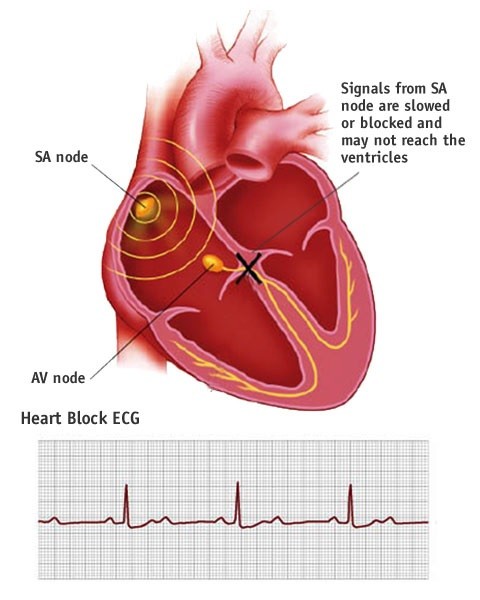Causes and Risk Factors
What causes bradycardia?
The most common causes of bradycardia are a problem with the S-A node or a problem in the heart's electrical pathways. These problems result in heartbeats that don't sufficiently meet the needs of your body.
To illustrate this idea, think of how a car works. If the accelerator is broken, the engine can't get enough gas to move the car as fast as you want. Similarly, if your heart's electrical system is not working normally, your body may not receive the extra fuel it needs to take a brisk walk.
Problems with the S-A Node
Problems with the heart's natural pacemaker can cause bradycardia. These types of rhythms are called sick sinus syndrome. The S-A node may not send signals frequently enough, which causes the heart to contract less often than it should. A slow heartbeat is typically less than 60 beats per minute (bpm).
Problems with the S-A node can also show up with a heart rate that is not matched to the work you are doing. This is called “chronotropic incompetence.” When you have chronotropic incompetence, you may feel tired when you are doing activities. This can occur at the beginning, middle, or later in the activity. This is caused by a heart beat that is late or not fast enough to give your body the oxygen-rich blood it needs.
Problems with the electrical pathway between the upper and lower heart (heart block)
Problems may also occur with the electrical pathway between the upper and lower heart. The electrical signals may be delayed in the A-V (atrioventricular) node or may fail to reach the ventricles all together. This condition is called heart block. Although the lower heart has a natural standby system that can produce its own heartbeat, this heartbeat is often too slow and unreliable. As a result, heart block often means that the ventricles pump too slowly even though the S-A node may be sending out faster signals in an effort to increase heart rate.

Syncope
Neurocardiogenic syncope is called also vasovagal, vasodepressor, neurally-mediated syncope (NMS) or reflex-mediated syncope. From 25 percent to 40 percent of fainting disorders are due to neurocardiogenic syncope.1
Neurocardiogenic syncope may be experienced by normal persons with no evidence of heart disease. The fainting event is triggered by emotional stress, nausea, pain, etc., and causes a sudden drop in blood pressure or heart rate.
Neurocardiogenic syncope is the most common cause of fainting in young people. Some adolescents have frequent fainting spells, but many physicians who treat syncope report that most of their young patients have "grown out" of the condition by the time they reach their mid-twenties.
Treatment depends on the cause for fainting – blood pressure or heart rate drop. Your doctor will discuss treatment options with you.2











